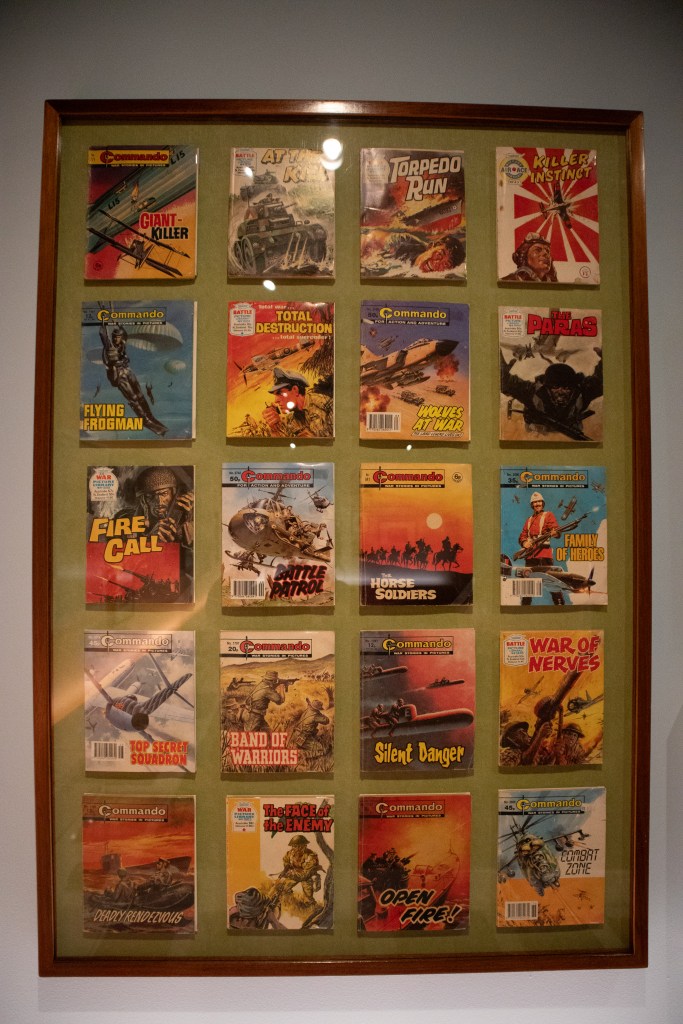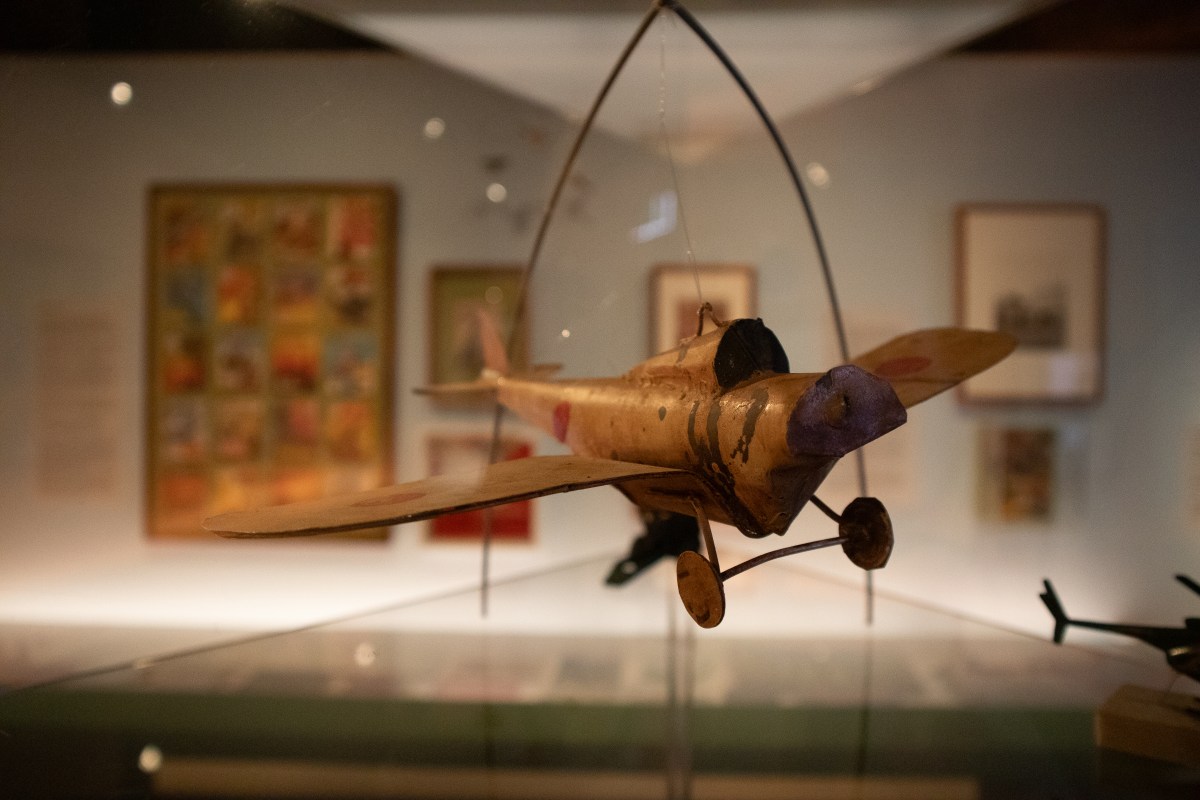One of three slogans promulgated by the party to the citizens of Oceania in George Orwell’s dystopian fiction 1984 is the paradox ‘war is peace’. Influenced by the horrors of World War II, Orwell explores a possible end game in the promotion of violence to maintain peace and power.
The exhibition Toys, Tales and Tenacity, currently showing in one of the many small exhibition areas at the Shrine of Remembrance in Melbourne, allows a space to contemplate that uncomfortable nexus between war and peace. In an exhibition that covers the period from the early 1900s to the present day, through stories, books, posters, toys, board games, letters and other memorabilia, the viewer is able to explore the impact and legacy of war on children and families, as well as the way war has been promoted and celebrated.
Curated by Katrina Nicolson, Tessa Occhino and Toby Miller, the objects and memorabilia on display have been borrowed from a range of sources including institutions, collectors and private individuals.
Personal stories can provide a unique insight into children’s experiences of war. Irene Jones tells her family’s story as Voluntary Air Observers on their property at Mount Separation in north-eastern Victoria during World War II. They had to record all aircraft activity and then report sightings to the Royal Australian Air Force by telephone. She recalls this as an exciting, but at times nerve-racking experience.
Drawn to heroic tales of war from Homer’s Iliad to the national identity-building stories of Gallipoli, young people and their communities have been inspired to participate in the experience of war in various ways; in the earlier years of our nation, the Australian national education system’s aim was to instil notions of duty, honour and patriotism. Young boys were required to do periods of national duty and an important part of this was the promotion of physical health and discipline in which all children were encouraged to participate.
On display at the Shrine are samples of The School Paper, a monthly magazine produced during World War I that promoted loyalty to the empire through heroic stories of war, along with poems and patriotic songs. Later The Victorian Readers, although still promoting patriotism, reflected a changing focus by also teaching about peace.

Today a more nuanced approach to war themes is reflected in literature such as The Diary of a Young Girl (1952) by Anne Frank and Tomorrow, When the War Began (1993) by John Marsden, and films, such as Peter Weir’s Gallipoli (1981). Toys and games also mirror this changing approach to war, from propaganda promoting games that overtly depicted the enemy like the Red Baron or Adolf Hitler as villains to be defeated, to video games of today that allow teenagers to encounter war through play.
Promoted through books, film, television, popular music and games, rising anti-war sentiment reflects the growth of activism from the middle of last century and the way it has changed children’s participation in war – from anti-war protests and peace rallies to humanitarian ventures like fundraising through organisations such as the Red Cross to aid injured South Vietnamese civilians or create care packages for refugees fleeing East Timor (now Timor Leste).
Although Australia welcomes refugees impacted by war from around the world, including people from African nations, Southeast Asia and the Middle East, it would have been good to see some discussion around Australia’s asylum seeker policy and its ongoing traumatic impact on children and families as part of the exhibition’s overriding war and peace narrative.
Read: Exhibition reviews: Margaret River Region Open Studios
A series of informative didactic panels support the exhibition narrative, as well as “thought circles” on the walls that raise questions for children to consider. Although combined object labelling on laminated pages placed around the space could have been more thoughtfully presented, the exhibition provides an informative insight into the impact and experience of war and conflict on children. At the end of the exhibition a small interactive area with paper and pencils is provided for them to respond, as well as a space to sit and watch/listen to footage and soundtracks related to war and protest.
Toys, Tales and Tenacity – childhood experience of war
Shrine of Remembrance
Curators: Katrina Nicolson, Tessa Occhino and Toby Miller
Toys, Tales and Tenacity will be on display until July 2024.





